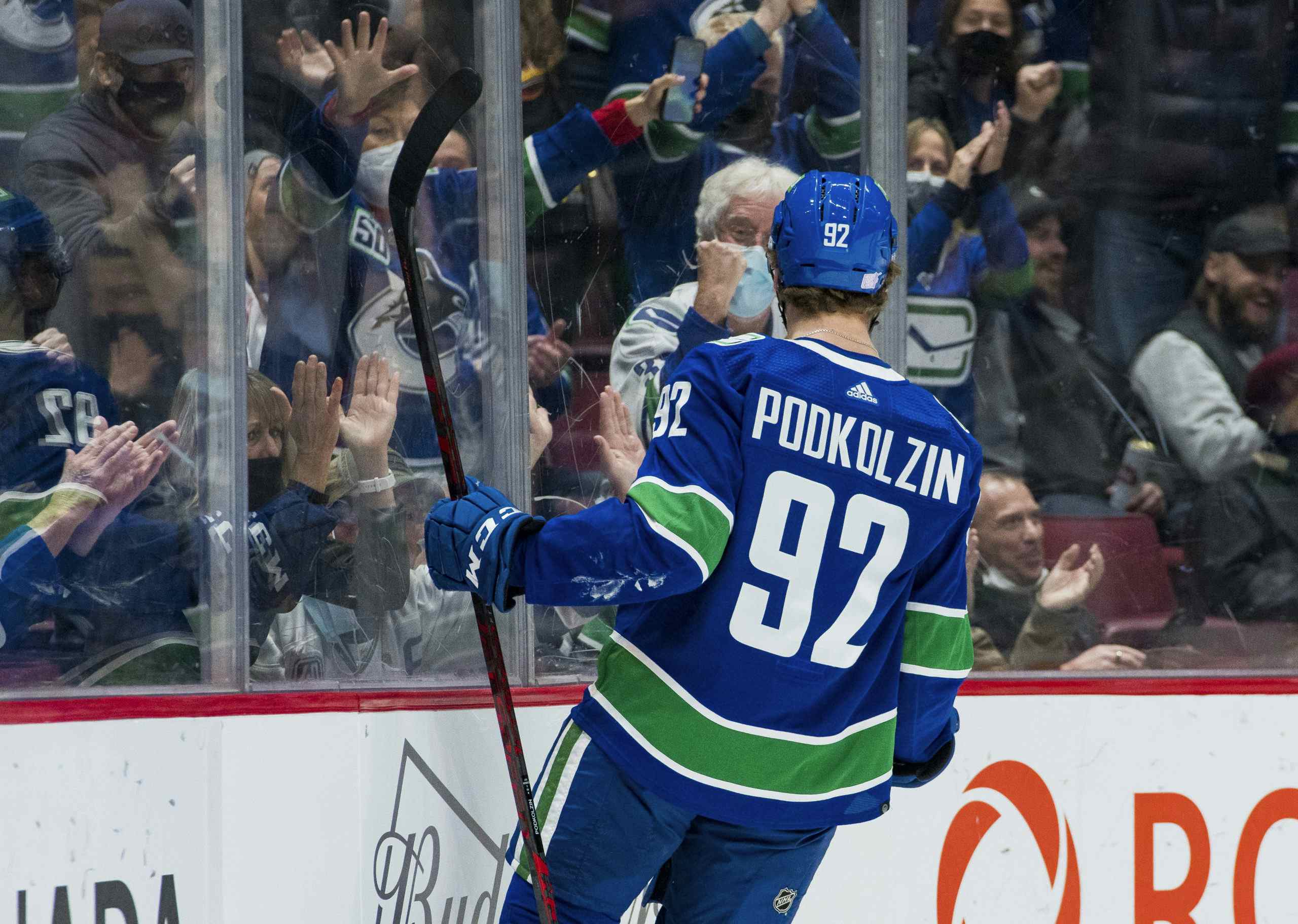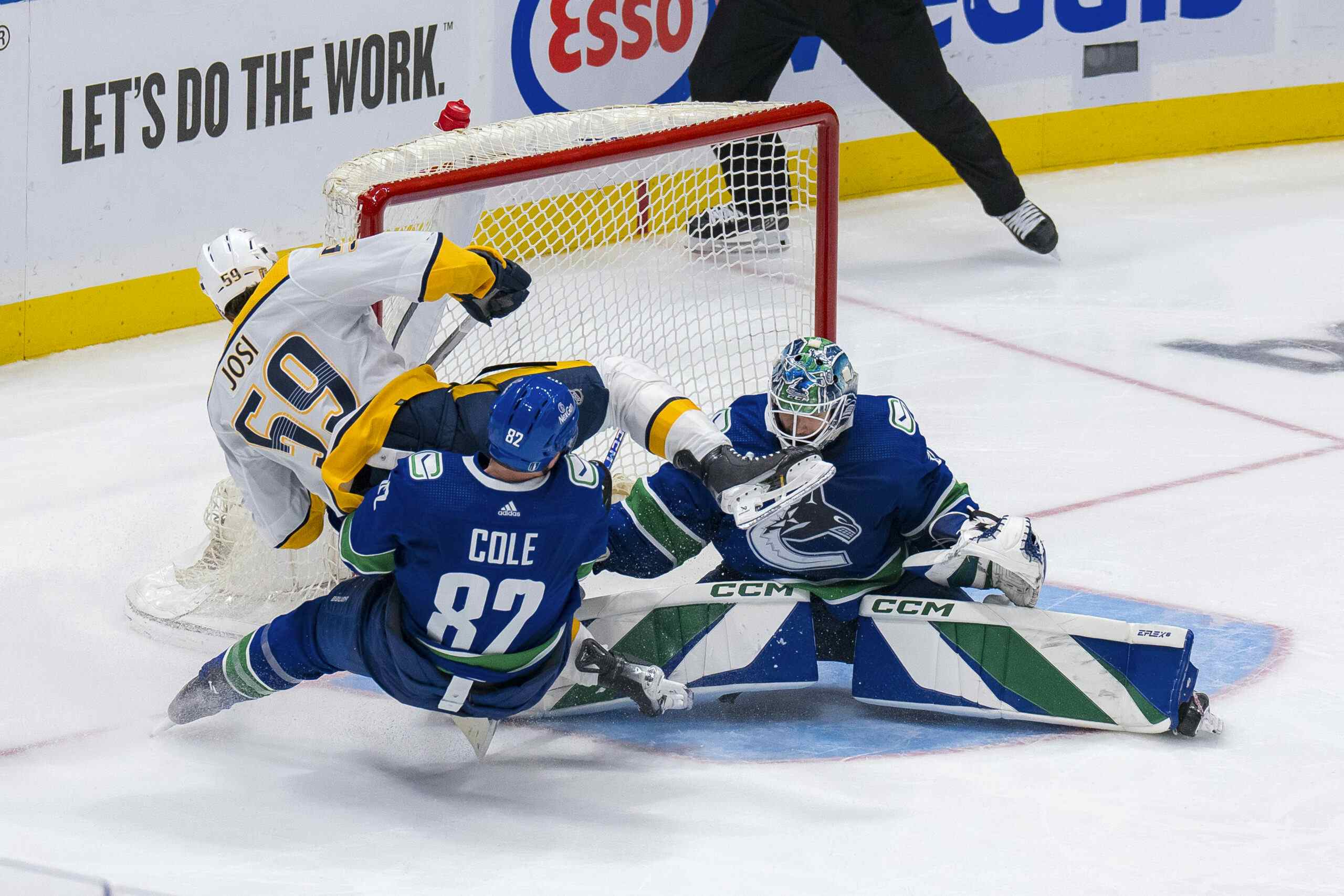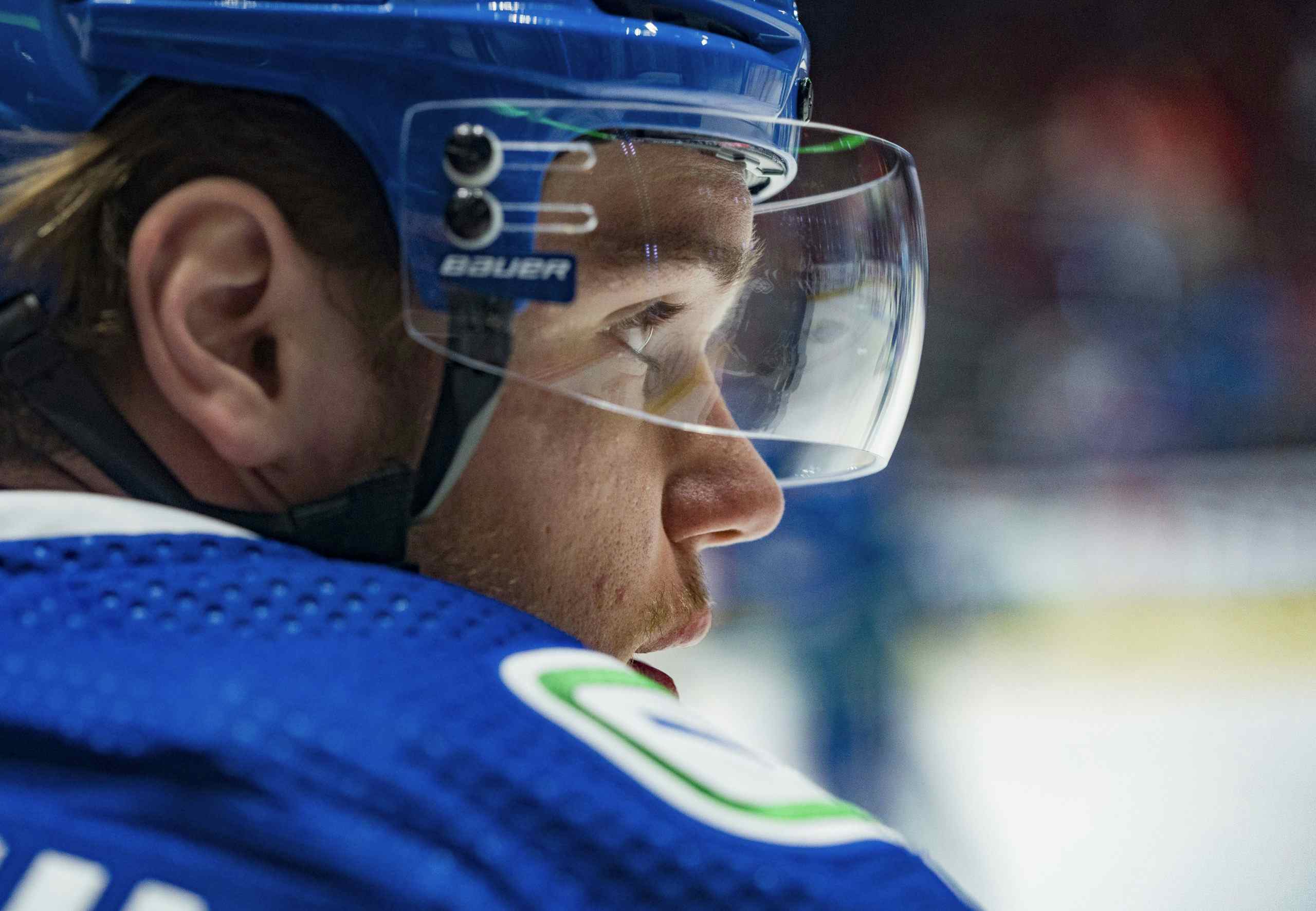Canucks Army Year in Review: Sven Baertschi
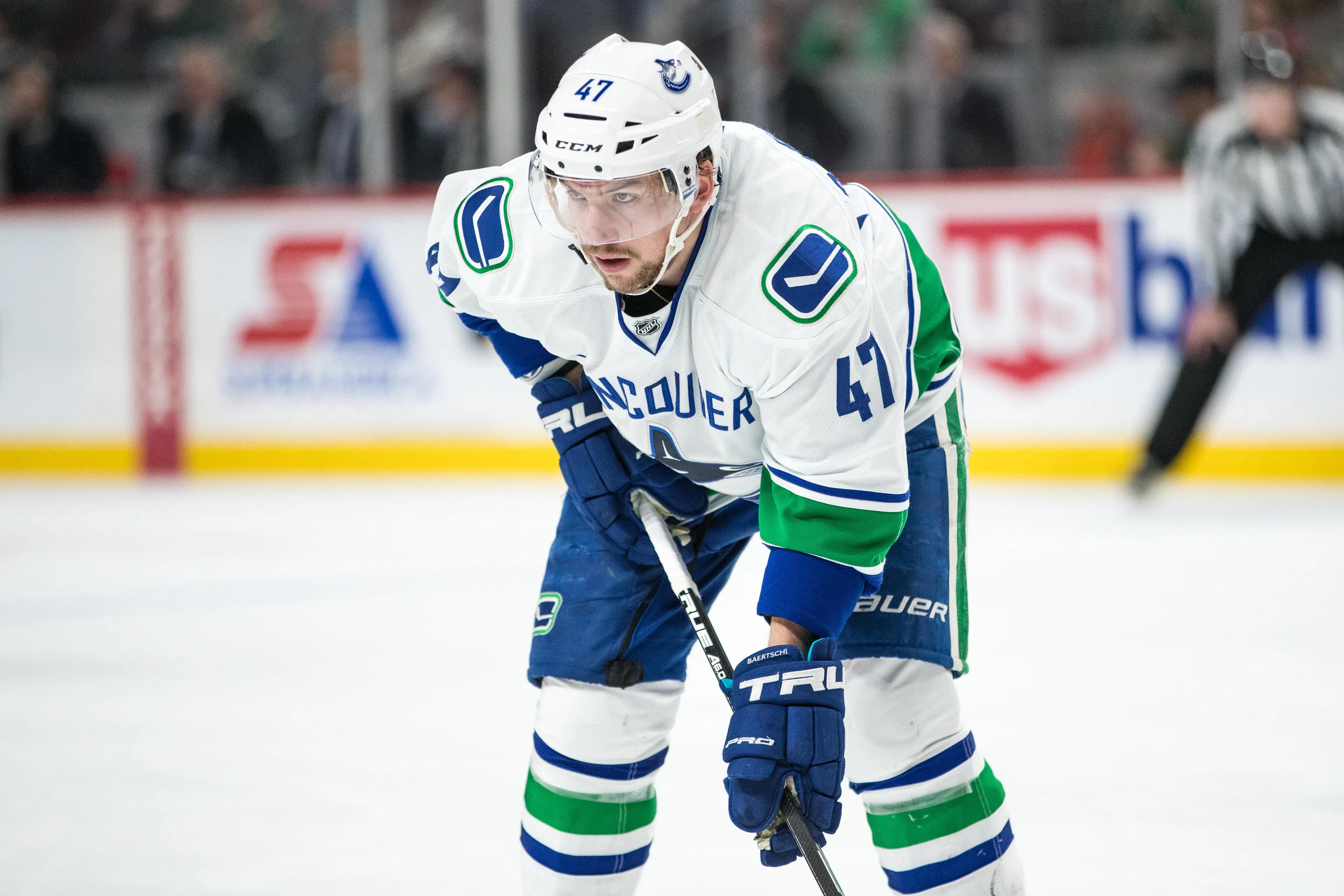
By Harman Dayal
5 years agoCanucks’ GM Jim Benning raised more than a few eyebrows when he lumped Sven Baertschi and Markus Granlund together in a recent interview — telling The Province that it was “a difficult year for both of them.”
On the surface, it appears foolish to compare Granlund and Baertschi — the former had just 12 points in 53 games after a 19 goal breakout campaign, whereas the latter was in line for a career-high in points with a clean bill of health.

Dive deeper beyond the surface though and you soon realize there may, in fact, be merit to the notion that Baertschi underperformed this season. It certainly wasn’t to the extent of Granlund and his precipitous decline, but it’s important to note nonetheless given Baertschi’s pending RFA status.
The most obvious sign of inflated production is Baertschi’s 17.1% shooting clip. This boost was perhaps felt in no greater capacity than on the man advantage, where Baertschi tallied seven powerplay goals on the back of a conversion rate north of 30%. These results came in spite of the fact that he generated unblocked shot attempts on the powerplay at his lowest rate since the 2013/14 season.
Isolating even-strength play brings Baertschi’s gaudy point totals into perspective, with just 19 five-on-five points compared to the 28 he notched last season. A big reason for this offensive decline was Baertschi’s inability to generate meaningful scoring chances for himself. His individual shots per hour rate was down for a second consecutive season, ahead of only Darren Archibald and Henrik Sedin.
The stipulating factor when addressing Baertschi’s lacklustre shot volume in years past has been his prioritization of quality over quantity, though it appears the former suffered this season as well.
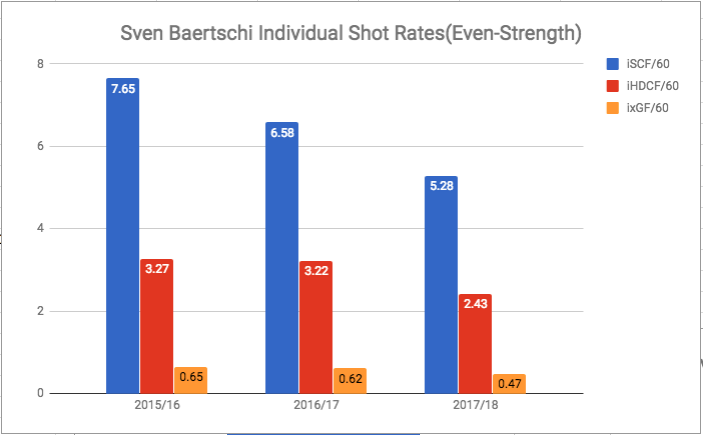
Baertschi finished outside of the top 12 Canucks forwards when looking at both individual scoring chances and high danger shot attempts per hour.
It shouldn’t come as a surprise to see then that he scored nine fewer even-strength goals relative to last season. Baertschi’s instead been able to add points by racking up assists playing alongside Bo Horvat and Brock Boeser. While Baertschi’s underrated playmaking acumen was likely the primary factor for this production, his team-high 10.2% on-ice conversion rate at even-strength must have had a favourable effect as well.
The extent of the latter’s effect looks to be even greater when looking at the microdata tracked by Corey Sznajder.

Shot assists are recorded each time a player makes a pass that directly leads to a shot on goal. Baertschi failed to distinguish himself as a marquee playmaker in this sample; finishing 7th on a porous Canucks’ forward group.
If all that wasn’t bad enough, Baertschi’s defensive game appeared to take a hit as well.

Baertschi was among a handful of Canucks’ forwards to negatively affect his teammates’ ability to control possession by greater than 2%. Not only that, but the top-line with Horvat and Boeser had better underlying numbers away from Baertschi.

Boeser and Horvat controlled possession and scoring chances significantly better with Nikolay Goldobin as their linemate, as opposed to Baertschi.
Adding further validation to Baertschi’s underwhelming two-way performance is his poor goals above replacement mark.
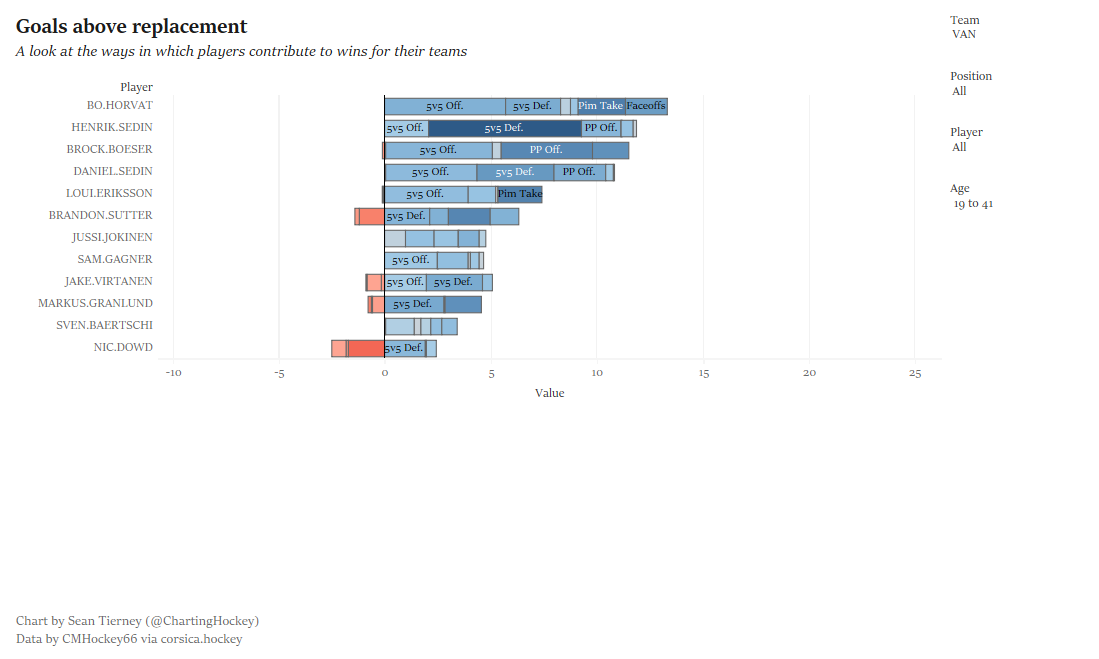
The GAR statistic aims to consolidate performance in all facets of the game, both at even-strength and special teams into a single, composite figure. Baertschi finishes 11th among Canucks’ forwards in contributing a little over three goals relative to a replacement-level player.
Conclusion
Sven Baertschi’s surface level results masked an otherwise underwhelming season from the Swiss winger. Unsustainable power play production boosted otherwise mediocre even-strength point totals when considering the luxury he had of playing with the team’s two most talented forwards.
A deeper look into the underlying numbers only exposed the holes in Baertschi’s performance this year. He struggled in creating offensive chances and had a negative effect on his teammates’ ability to control possession to go along with deteriorating defensive play.
All this isn’t to suggest that Baertschi is a bad player, but rather that his impressive point totals were inflated as a result of favourable contextual factors including linemates and shooting percentages.
Given that the Canucks are set to enter the NHL Entry Draft with fewer than their allotted picks for the second time in three years, perhaps this is an opportunity for the team to take advantage of a market inefficiency and sell high on Baertschi.
Recent articles from Harman Dayal

